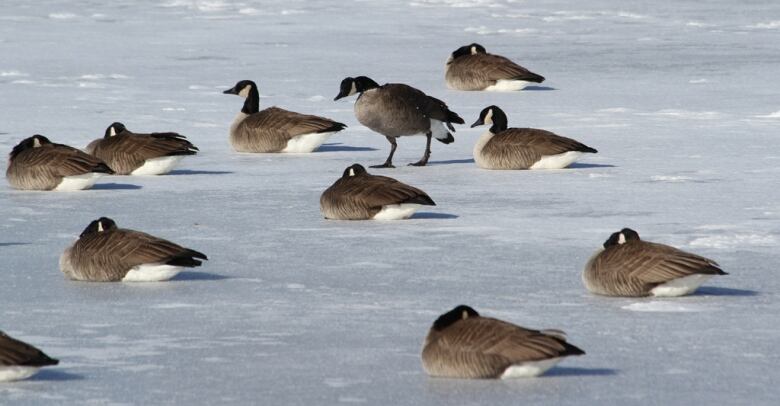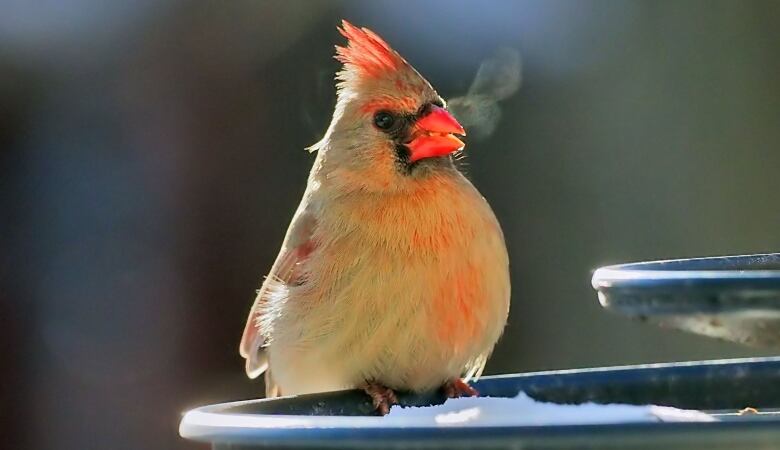How birds stay warm through Canada's cold winters
Some birds' brains literally expand to find food, while others survive by going into hypothermia nightly

Winter is the perfect time to hibernate inside and fatten up on holiday baking for humans, that is. Wildlife haveto come up with their own strategies for surviving thebrutally cold season.
Birds havethree options when it comes toadapting to temperatures well below zero, naturalist Brian Keating told CBC's The Homestretch on Wednesday: "migrate, hibernate, or tolerate."
- Banff wolves may soon have meal they haven't tasted in 140 years: wild bison
- This video of magical ice bubble forming goes viral for Calgary photographer
Keating said he was curled up inside his Calgary home with a mug of hot chocolate in hand on Tuesday evening, watching chickadees, nuthatches, woodpeckers and finches flitabouthis backyard, while the temperature dipped as low as -29 C.

Chickadees ride out the winter by eating as much fatty foods (like sunflower seeds) as they can, before huddling together in a winter roost at night.
"On the coldest nights when it gets really frosty they enter a nightly hypothermia," Keating said.
"Their body core temperature drops and they tolerate it by allowing themselves to chill down."
On the most bitterly cold nights, when the temperature drops below 30 C, some birds even tuck away in shelters beneath the snow.
Brain gain
Chickadees get smarter literally to remember where food is stashed or track down caches of hibernating grubs.
Red Deer naturalist Myrna Pearmanexplainsin her book Beauty Everywhere that the chickadee's hippocampus the part of the brain that's responsible for memory and spatial organization, said Keatingexpands by 30 per cent each fall.

Waterfowl like geese and ducks have a built-in feature that prevents their feet from freezing to the ice when tucking them under their body just isn't enough: a counter-current blood-warming system.
"Hot arterial blood wraps the venous (returning) blood with smaller, branched capillaries just like a glove, allowing for that valuable heat to efficiently warm the incoming blood from the legs and feet," Keating said.
"That way they can save that valuable heat energy and keep their core warm."
Cold-weather champion: Arctic Redpoll
But these birds have nothing on the Arctic Redpoll, a tiny finch that's developed some extreme cold-weather tricks.
"They can survive up to 20 hours without access to food, even if temperatures drop to -54 C," Keating said.
Redpolls have specially designed esophageal pouchesthat allow them to hold on to seeds, then later slowly digest them to provide them with energy to maintain their core at a balmy 40 C "kinda like throwing logs on a fireplace."
"Their internal temperature can be 73 degrees warmer than the surrounding air, with the two extremes being separated by less than a half a centimetre layer of feathers."
Listen to Keating'sinterview below:

- MORE ALBERTA NEWS |Ambushed: Unsolved murders of kindergarten teacher and Mountie still haunt small Alberta town
- MORE ALBERTA NEWS |One man's unsuccessful search for his long-lost brother turns up an unknown sister
With files from The Homestretch












_(720p).jpg)


 OFFICIAL HD MUSIC VIDEO.jpg)
.jpg)



























































































